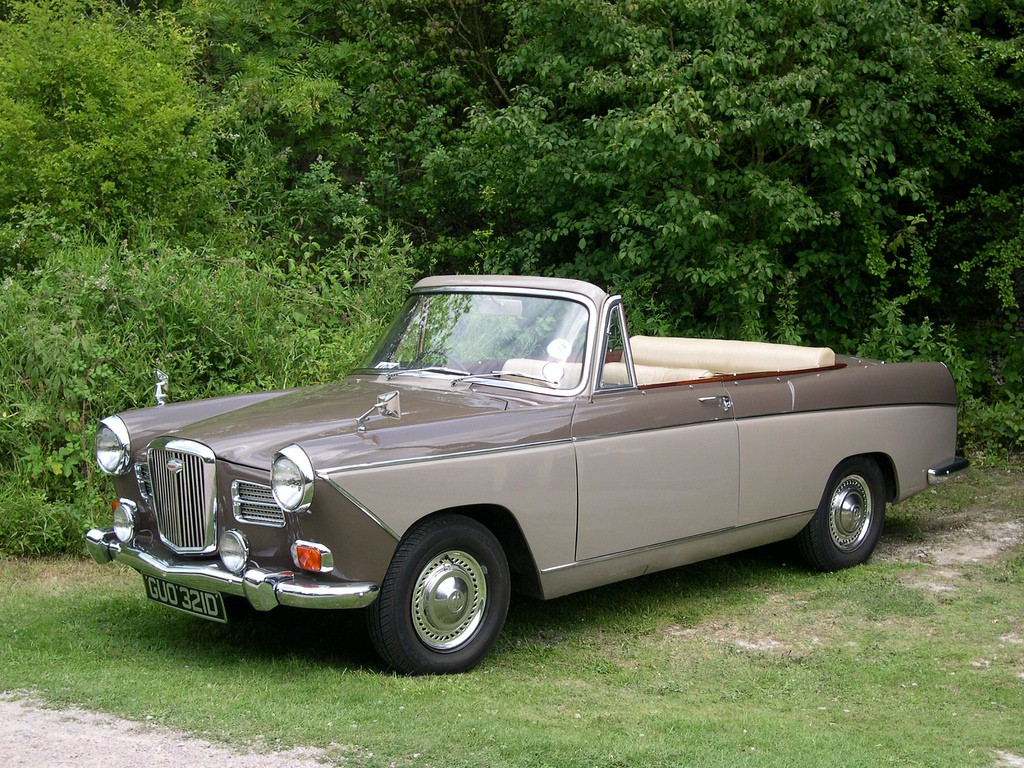1951 Buick Le Sabre concept:
A preview of things to come later in the decade, the Le Sabre's high-tipped fins were influenced by the aviation industry's shift to jet propulsion. The idea, designed by Harley Earl, included a 3.5-liter V8 supercharged engine that was driven by an unusually placed automatic gearbox at the back. Electrically exposed headlamps were hidden beneath the front bumper labelled "jet intake," and heated seats were located within. In the event of a puncture, integral electric jacks raised the vehicle, while a water sensor caused the convertible hood to automatically extend again in the event of rain.
1956 Chrysler Dart:
Virgil Exner of Chrysler was eager to "out-fin" General Motors and produced what was then deemed to be the most aerodynamic vehicle ever made. The body of the Dart was created and tested in a wind tunnel by Ghia in Italy, fusing European styling and aerodynamic flair with American engineering. It was said that the Dart's spectacular rear fins gave it exceptional crosswind stability detector.
1956 Hillman Minx:
The 1956 Hillman Minx was designed by Raymond Loewy Studios in the United States, the same studio that created the finned Studebakers from earlier in the decade, and was based on Rootes Group's 'Audax' platform. It was therefore not surprising when the new Minx debuted with a reduced version of the Studebaker's fins, which resembled elevated wings more than anything else but yet gave the mid-sized Hillman a touch of transatlantic flare.
1957 Chevrolet Bel Air:

The 1956 Hillman Minx was designed by Raymond Loewy Studios in the United States, the same studio that created the finned Studebakers from earlier in the decade, and was based on Rootes Group's 'Audax' platform. It was therefore not surprising when the new Minx debuted with a reduced version of the Studebaker's fins, which resembled elevated wings more than anything else but yet gave the mid-sized Hillman a touch of transatlantic flare.
1957 Vauxhall Velox/Cresta PA:
Few vehicles would have broken through the British post-World War II fog of austerity like the more luxurious Vauxhall Cresta and PA Velox.
The PA boldly displayed a wraparound windscreen, bench seats, a chrome-laden front end, a variety of pastel paint colours and large chrome-topped fins that integrated the car's indicator lights, all of which were inspired by design cues from parent GM's Buick brand.
1957 Buick Roadmaster:
Buick's Roadmaster, which debuted in the seventh generation, gained 10 inches (254 mm) of length. Although the previous model had some fins, the 1957 car's fins were more noticeable and emphasized by a chromed panel along the rear wing. The car's front was still decorated with "Dagmar" bumpers, and the 1957 Roadmaster looked much sexier with its lower roofline and reverse-slanted windscreen pillars.
1958 Chrysler 300D:
The 'B,' Chrysler's first letter-series model, was almost completely lacking in fins, but by the time the 300D debuted, design leader Virgil Exner was obviously on his game.
The final Chrysler 300 letter-series model to use the Fire Power V8 engine had a 6.4-liter capacity, the same as the previous model, but 375 horsepower. The majority of the vehicles were modified with dual four-barrel carburetors after optional fuel injection was introduced, however it turned out to be unreliable. One 300D was driven to 156.387 mph on the Bonneville Salt Flats, which is blisteringly fast.
1959 Wolseley 15/60:

Pinin Farina was hired by BMC to revamp the relatively dowdy styling of its 1950s mid-size Austin, Riley, MG, and Morris models into a single body that is differentiated by different trims, grilles, lighting, equipment configurations, and engine outputs. Similar to its Farina-bodied siblings, the Wolseley had ample fin capacity and performed admirably when compared to competitors such as the Singer Gazelle, Vauxhall Victor, and PA. The 15/60's modest 1489cc B-series four-cylinder engine was possibly not as unusual.
1959 Buick Electra:
Fin design had nearly peaked in the US by the time the 1959 Electra was introduced, but Buick had cut them back by the 1961 model year The range-topping 1959 Buick Electra, however, was a magnificently audacious and opulent near-final hurrah to fin design while it was available. Customers had a choice of saloon, coupé, or convertible body styles for this vehicle, which was powered by a 6.6-liter V8 and sent power to the rear wheels through a two-speed automated transmission.
1959 Ford Anglia:
In 1959, Ford's Anglia was replaced with the fourth-generation 105E model, which had a muted fin design. It was reportedly a four-seater Ford Thunderbird that was designed by Elwood Engel at Ford's US design centre. Its backward-sloping rear window and wind-tunnel-tuned front end would make it difficult to notice the connection without squinting. Even by the standards of the late 1950s, the Ford Anglia was never a performance vehicle when it came to base configuration. It was propelled by a brand-new 997cc overhead-valve four-cylinder engine.



.webp)





.webp)


.webp)